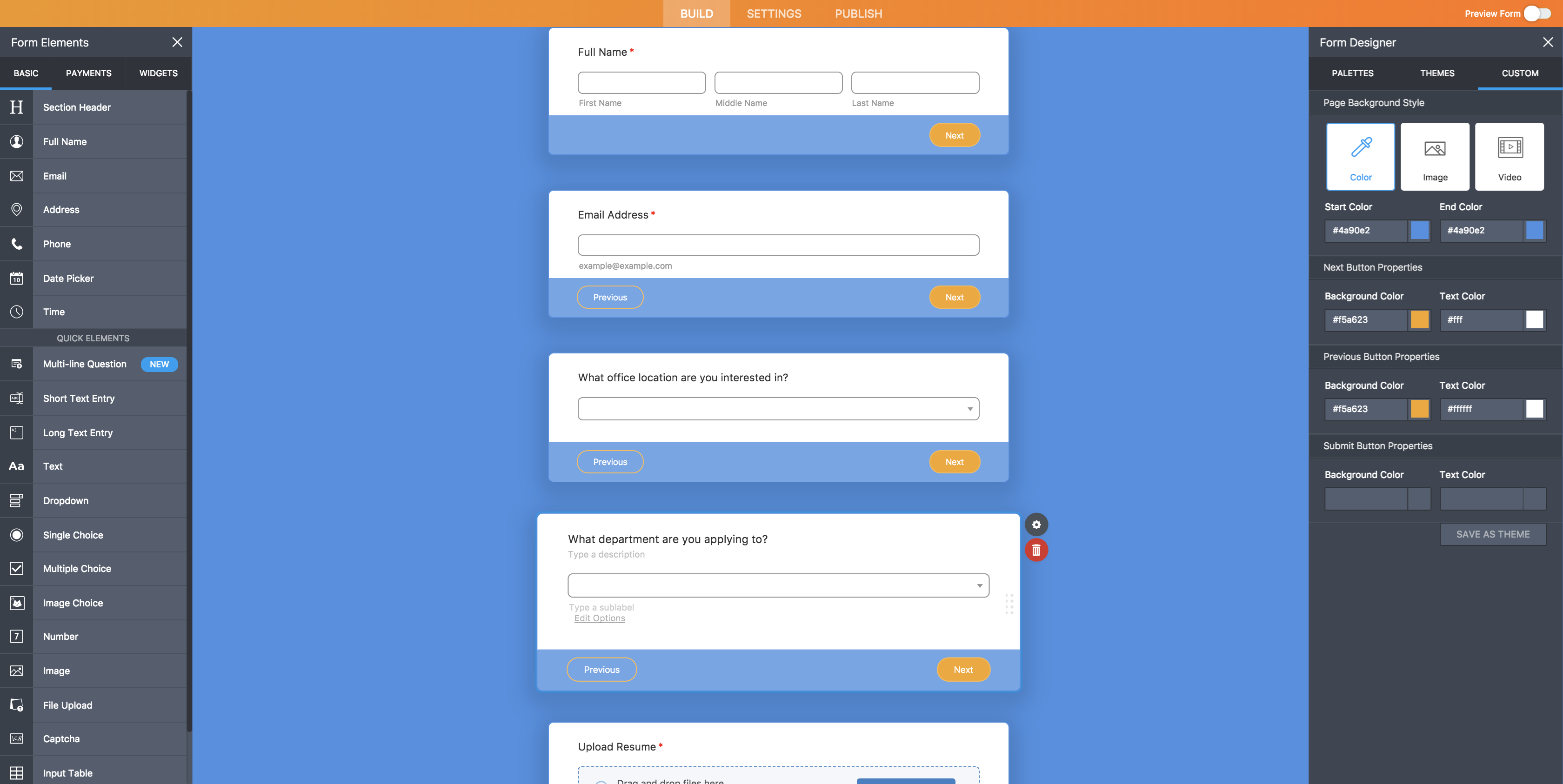JotForm + Asana: Turn information into action

Whether you have an e-commerce business, provide services such as event management, or run a non-profit, you probably get a lot of orders, registrations, or fundraising contributions through your website. And regardless of what your business is, your website is probably also your main channel for promoting and sourcing job applications.
Collecting information via web forms makes the data gathering phase easier, but what happens after someone hits the submit button? Where does the information go? How do you action it? This is where Asana comes in.
When you integrate your web form tool with Asana, you turn your responses into actionable (and trackable) tasks. Form responses automatically become tasks in the Asana project you specify so they can be assigned, given a deadline, and actioned by your team. And today we’re excited to announce that we now integrate directly with JotForm, an easy-to-use web form builder.
Collect, track, action
In addition to managing orders, responding to service inquiries, and allocating donations, our customers use web forms with Asana for a variety of use cases. Here are a few of the common ones we’ve seen:
Event registration
Collect attendee names, RVSPs, and other event details such as dietary preferences in one central project. Then create follow up tasks for your event team. Use custom fields to sort meal allocation or VIP status, and assign tasks for follow-up with important attendees.
Fundraising
Use a form to collect name, contact, and payment information; then use tasks to ensure that donations are tracked for accounting purposes and donors receive proper thank yous. Custom fields can be used to sort donations by amount range and flag high-value donors.
Applicant tracking
Collect job applications submitted by candidates in an Asana project. Use custom fields to sort applicants by location or department, then assign application review and follow-up to hiring managers.
Internal work requests
Make it easier for teams to submit work requests to internal service teams such as creative, IT, or facilities. It also eliminates “drive-by” requests and allows teams to manage resources efficiently by providing an overview of request priority. By creating mandatory fields for the information you need, you’ll eliminate tedious back-and-forth communication.

JotForm and Asana
When you integrate JotForm and Asana, you can:
- Map form fields to task fields in Asana, including task name, assignee, due date, and followers. Regardless of how you map these fields, all information from the form will be captured in the task description.
- Automatically route form responses as tasks to the Asana project you specify, so your team can track and action them.
- Better understand, categorize, sort, and action the response by mapping specific form fields to custom fields if you use Asana Premium. Not using Premium yet? Learn more about the benefits of Premium.
![]()
To learn how to connect JotForm and Asana, visit the JotForm blog.
What is JotForm?
JotForm, the easiest online form builder, gives companies of any size an effortless, intelligent data collection tool that delivers higher quality form completion for better insight and smarter decisions.

